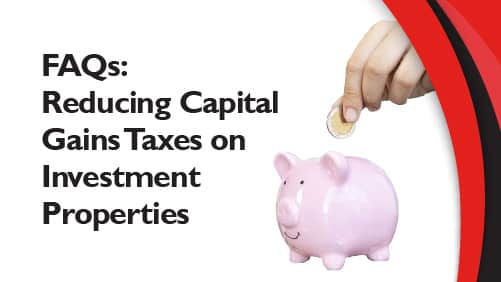If you’re considering moving to a new property, understanding property taxes is a necessity.
After all, you can’t plan your budget if you don’t know how much money you’re giving to the government in the form of taxation.
Read on to find out more about property taxes, how to estimate property taxes and how to find out about property tax burdens in Australia when you’re considering selling your home.

What Property Taxes Do I Owe in Australia?
There are several property taxes that apply in Australia, both to businesses and individuals.
These taxes include:
Land Tax
Land tax is the tax rate that a state charges for the land that you own.
You don’t normally have to pay land tax on your home, but will have to do so for any additional properties that you own, such as rental properties.
This applies to both developed and undeveloped land, so have a comprehensive idea of the amount of land that you and your organisation own.
The rate of land tax varies depending on the state.
Rates
Rates are taxes that the local government levies against people and businesses that own properties in those areas.
A business that owns several properties are likely to receive a rates bill, with governments tending to send these out every quarter.
Different local governments charge different levels of rates depending on their own method of calculation, so speaking to the council about their rates is ideal for understanding any charges.
Stamp Duty
When you buy a property, you have to pay stamp duty.
This is to either the state or territory government and is a tax on certain documents that are involved in the property purchasing process, including property transfer documents.
Stamp duty varies depending on your location, as the power to define stamp duty rates is devolved to state authorities.

How do I Estimate my Land Taxes in Australia?
It is useful to know how to estimate property taxes.
As with many different forms of fiscal policy, property tax is one that is constantly adjusting depending on the needs of the government.
For example, when reducing the rate of tax or increasing the threshold for payments, the government actively encourages people to invest in property.
The same applies the other way around, with landlords discouraged from owning more and more properties through the use of higher levels of taxes.
The thresholds in New South Wales, for example, have changed as follows over the past few years:
| Year | General Threshold | Premium Threshold |
|---|---|---|
| 2022 | $822,000 | $5,026,000 |
| 2021 | $755,000 | $4,616,000 |
| 2020 | $734,000 | $4,488,000 |
| 2019 | $692,000 | $4,231,000 |
| 2018 | $629,000 | $3,846,000 |
| 2017 | $549,000 | $3,357,000 |
| 2016 | $482,000 | $2,947,000 |
| 2015 | $432,000 | $2,641,000 |
If you want to make this calculation simpler for yourself, fill in the official rates and tax calculator Australia based that the government offers.
This separates residential properties, commercial properties and rural properties for ease of use.
You’ll need to enter the value of the property in addition to the percentage of the property that is owned by a foreign entity in order to get a better idea of the fees that you pay.
This then breaks down your tax rates simply by setting out the rates for your specific property value, the land tax you pay on your property and even breaking down the charges into a step-by-step set of costs.

FAQs about Property Tax
Have any questions about Property Tax? Pherrus Financial Services can help.
Who pays land tax in Australia?
Anyone who owns land that is not their home pays land tax.
This is the case whether the land earns revenue or not, incentivising people to develop and monetise all of the land they have available.
How do you calculate land tax in NSW?
In NSW, the government publishes thresholds of land value that define the amount of tax that you pay.
On exceeding the general threshold you pay $100 plus 1.6 per cent of land value above the threshold, up to the premium threshold, at which point you pay $67,364 plus 2 per cent of land value above the threshold.
How often do you pay land tax in Australia?
Land tax is an annual tax that is levied at the end of the calendar year, so you pay all of your land tax for any given period in one large annual payment.
Which states in Australia pay land tax?
All states in Australia have a land tax, with the most recent introduction of land tax in the country being Queensland’s Land Tax Act of 2010.
The first was South Australia’s Land Tax Act of 1936, with a raft of other states joining in early 2000s.
Which state has the highest land tax in Australia?
Starting next year (2023) the highest level of land tax in Australia will be New South Wales, with a land tax surcharge of 4%.
This is above Victoria, Queensland and Tasmania, which each have half that level of land tax levy.

Find Out Your Property Tax Ahead of Your Next Move
Calculating property taxes can be a complex process, as there are so many different calculations to complete that all refer to different parts of your property.
If you’re interested in making property tax calculations simpler and making the most of your property transactions, get in touch with the Pherrus team today.
We can support your accounting needs and ensure that you only pay the tax you need to.





